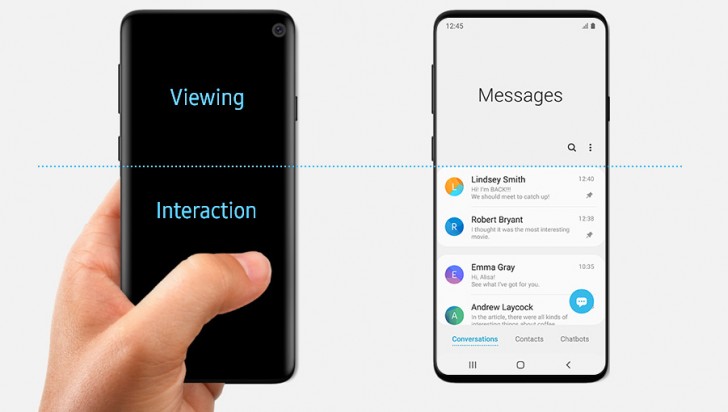Samsung Galaxy S10 in-display fingerprint scanner reportedly blocked by screen cover
Ultrasonic scanning might have issues

One of the most anticipated rumored features coming to the Samsung Galaxy S10 is an in-screen fingerprint scanner. Unfortunately, noted case maker Armadillotek has claimed that its screen cover can block the phone from reading fingerprints.
We have tested our cases on real #GalaxyS10 phones. The in-screen fingerprint does not support screen protector. So our vanguard will have no built in screen protectorJanuary 16, 2019
Conceivably, this might also apply to other translucent coverings separating the display from fingerprints, from thin screen shields to thick see-through covers in protective cases.
Until we hear back from other sources, it's unclear if this applies to any layer between display and finger or just certain ones of meet a minimum thickness or made from particular materials that interfere with Samsung's rumored ultrasonic technology.
It may not be a materials issue: when reached for comment, Armadillotek said it tested tempered glass and PET (polyethylene terephthalate) covers – and both blocked the fingerprint sensor. Consequently, Armadillotek said in its tweet, the company will forgo the screen protector on its signature Vanguard case.
Construction conflicts
The issue could lie with how the scanner reads fingers. Unlike fingerprint scanners in other phones that use light to scan skin surface (like in the OnePlus 6T), the one on the Samsung Galaxy S10 will allegedly use ultrasonic waves.
This won’t be a problem for every new Samsung phone: the standard Galaxy S10 and Galaxy S10 Plus are slated to get an in-display ultrasonic fingerprint scanner, while the one on the S10 Light will allegedly have an older-style fingerprint scanner mounted on the phone’s side.
- Here's all the info we know on cases for the upcoming Samsung Galaxy S10
Sign up for breaking news, reviews, opinion, top tech deals, and more.

David is now a mobile reporter at Cnet. Formerly Mobile Editor, US for TechRadar, he covered phones, tablets, and wearables. He still thinks the iPhone 4 is the best-looking smartphone ever made. He's most interested in technology, gaming and culture – and where they overlap and change our lives. His current beat explores how our on-the-go existence is affected by new gadgets, carrier coverage expansions, and corporate strategy shifts.